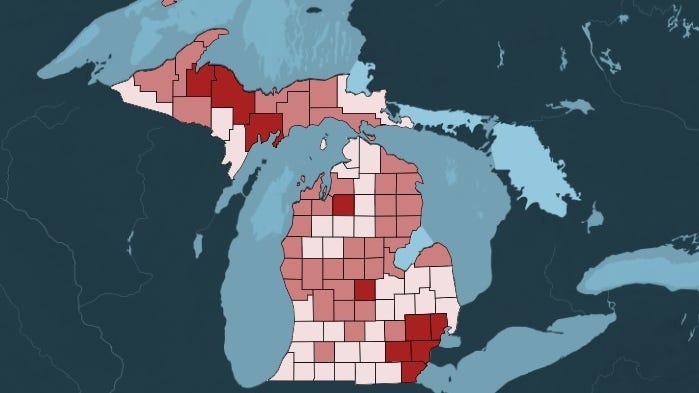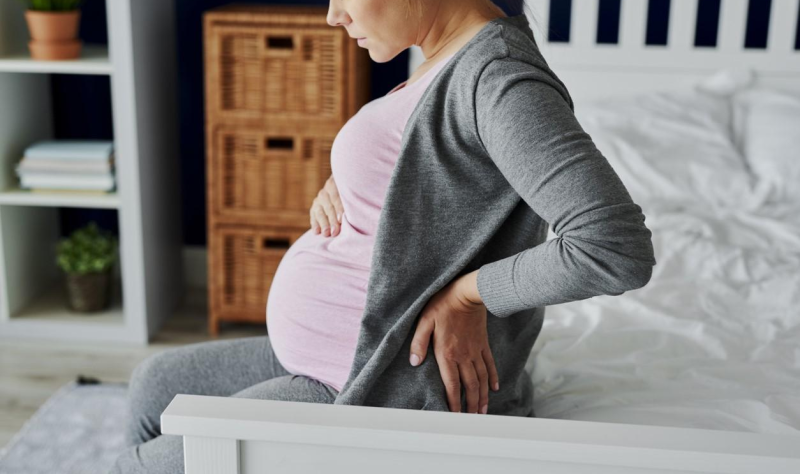COVID cases down in Michigan, but CDC advises masks for Detroit metro


As it warms up in Michigan, experts are noticing an important trend: The number of COVID-19 cases are going down across the state and the number of counties believed to have a high community transmission levels has dropped.
It’s a sign that the virus is slowly morphing from a pandemic to an endemic virus in the United States, one that will still surface seasonally but for which residents are more prepared, doctors say.
The downward trend is reflected in recent numbers from around Michigan. The state added 19,535 cases and 50 deaths from COVID-19 in the last week, the Michigan Department of Health and Human Services reported Wednesday. That’s an average of about 2,790 cases per day, down from 3,710 a week before. Hospitalizations also were down for the second week.
“We’re holding fairly steady right now,” said Dr. Matthew Sims, director of infectious disease research for Beaumont Health. “We sort of a hit a high sometime last week, and then we’ve calmed down a little bit. Now we’re trending up just a little bit. It bounces up and down a little, but overall, we seem to be holding fairly steady.”
In recent weeks, doctors say the patients they’re seeing are considerably less sick, including many who don’t even suspect they have COVID.
“Many patients … they come in with things that we wouldn’t think about COVID, but we’re testing them, because they may have a single symptom that can put them in that direction. So they’re not highly symptomatic,” said Dr. John Brooks, infectious disease specialist at McLaren Health Care and chair of McLaren’s emerging pathogens response team.
“But any symptom that we have any concern, we test and say, ‘Oh, by the way, you were positive,’ and they’re like, ‘What? I didn’t know I was!'”
The fewer cases are one reason for the relaxed COVID advice from the Centers for Disease Control and Prevention, suggestions which were released Thursday for several counties. Now 10 of Michigan’s 83 counties, including Wayne, Oakland and Macomb counties, are now considered to have “high” community transmission levels, a CDC measure that indicates people in those counties should wear masks indoors.
Those counties still include many of the most populated including Wayne, Oakland and Macomb. Across the state, 46% of Michiganians live in counties considered to have high community transmission levels. But more than half of Michigan counties reported the number of COVID patients in the hospital are down, another sign people are generally getting less sick.
A week earlier, 14 counties had high community transmission levels, which was a dip from the week before, when 22 counties around the state had high levels.
The CDC reported that 39 counties were in “medium” community levels, where people are recommended to wear masks around those susceptible to severe illness; the remaining 34 counties are considered to have low transmission rates.
Seasonal surges, rather than the random ones of the past two years, are one of the signs that a virus is becoming endemic, Sims said. A endemic virus will still have a “baseline level,” he said, but it will generally be much smoother when waves come, giving medical professionals a chance to prepare for them.
Several doctors noticed they had seen more people with Influenza A, which is typically seen during the winter months, rather than Influenza B, which often is the main strain of the virus at this time of year.
Brooks said that it may be the changes in ways people have worn masks that have led to the delayed push from Influenza A. It’s possible Flu B will have a delayed season or may not be prevalent this year, he said
“I don’t think we quite know at this point what is going to happen,” he said.
Doctors are able to forecast what they think will come next for COVID, though. Dr. Dennis Cunningham, system medical director of infection control and prevention at Henry Ford Health, said the downturn in cases is part of “a little bit of a break” that will be seen across much of the country as people spend more time outside.
It’s likely the next surge will come from new Omicron substrains seen in South Africa, he said. The symptoms are similar, but people generally need a higher level of antibodies to be protected, Cunningham said. Government officials have anticipated the new subvariants, BA.4 and BA.5, are expected in the U.S. by the fall, but it could come as soon as mid-summer.
“This is why that booster dose is so important,” Cunningham said. “We know that four to six months after a booster, those (proteins) start dropping. So that’s why I want the message to be for people to get their booster.”
Experts agree that the methods of staying safer are the same today as they have been for much of the pandemic: Wash your hands, wear a mask in crowded places even if you’re outside (“Outdoors is safer, but not necessarily safe,” Sims said), get vaccinated and stay home when you’re sick.
Health officials encouraged people to test often, especially if they have a new symptom develop. Free COVID tests are available through the U.S. Postal Service at special.usps.com/testkits, and many stores have home tests in stock.
Doctors urged people not to underestimate COVID, even during what appears to be a lull in cases.
“I’m happy that the number of cases is dropping,” Cunningham said, “but it’s still pretty high. We’re not out of the woods quite yet.”
Twitter: @Hayley__Harding



